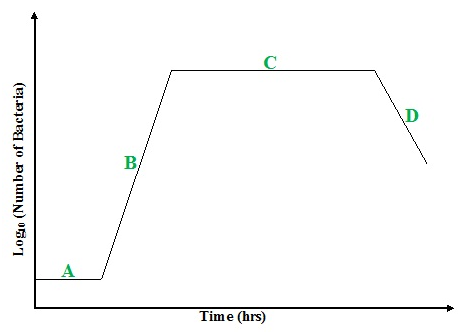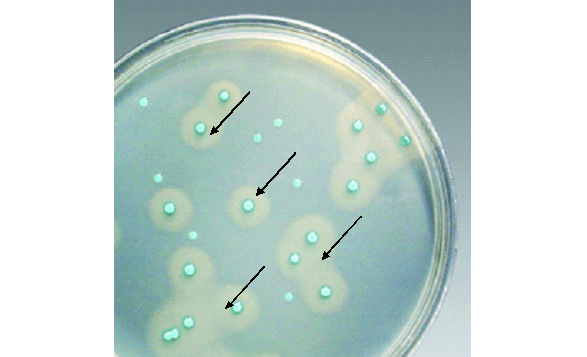Food borne diseases are diseases caused by the ingestion of food borne pathogens. They are generally regarded as gastrointestinal infections that occur when microbes are ingested via contaminated foods or food products. In cases of food borne diseases, the ingested food borne pathogen grows within the gastrointestinal tract (GIT) or gut of the affected individual; and this microbial growth result in some clinical conditions or symptoms such as vomiting, abdominal cramp and profuse stooling that infer possible cases of food borne illnesses.
Food borne diseases also encompass food intoxifications and food poisoning, but there are some variations that exist between these health anomalies (i.e. food intoxifications, food poisoning and food borne diseases) that occur in humans following the consumption of food and food products that are heavily contaminated by pathogenic microorganisms.
Table 1 shows the list of some pathogenic microorganisms that are mainly implicated in most cases of food borne diseases. Food borne diseases usually result from the consumption of foods or water that contains viable or living pathogenic microorganisms that invade the host’s GIT to cause gastroenteritis. According to the World Health Organization (WHO), unsafe and microbial-contaminated food and food products portend great health and economic consequences.
Aside the morbidity and mortality associated with the consumption of food and food products contaminated by pathogenic microorganisms, a lot of resources are expended globally to contain the health consequences of food borne illnesses including cholera, botulism, salmonellosis, staphylococcal poisoning and other gastroenteritis caused by food borne agents. Food borne outbreaks has been reported in recent times in most parts of the world inclusive of sub Saharan Africa; and the trend is on the increase owing to the inadequacies associated with food handling and processing in some quarters.
To ensure food safety and good quality of processed foods, it is critical to take food hygiene and monitoring of food products for possible contamination by food borne pathogens seriously. Most of the environments where food is being processed are unhygienic, and the equipment and personnel involved in food processing do not imbibe strict hygienic procedures that are capable of minimizing microbial contamination of these foods.
Salmonellosis (caused by Salmonella species), traveler’s diarrhea (caused by pathogenic strains of E. coli), botulism (caused by Clostridium botulinum), cholera (caused by V. cholerae), shigellosis (caused by Shigella species), staphylococcal food poisoning (caused by pathogenic strains of S. aureus) and listeriosis (caused by L. monocytogenes) are typical examples of food borne illnesses.
Table 1. Summary of microorganisms that cause food-borne infections in man
| Pathogen | Type of microorganisms | Disease | People At risk | Mode of transmission |
| Listeria monocytogenes | Bacteria | Listeriosis | Neonates, infants, pregnant women, the elderly and immunocompromised host | Contaminated food e.g. meat, dairy foods and unpasteurized milk |
| Adenovirus group | Virus | Gastrointestinal infections | People of all ages | Contaminated food |
| Salmonella serotypes | Bacteria | Salmonellosis | People of all age groups | Contaminated food e.g. vegetables |
| Girdia lamblia | Protozoa | Girdiasis | People of all ages | Contaminated food e.g. meat |
| Norovirusgroup | Virus | Gastroenteritis | Children and adults | Contaminated food e.g. shellfish, fruits and ready-to-eat food |
| Shigella dysenteriae | Bacteria | Shigellosis | Infants, malnourished children and adults | Contaminated vegetables |
| Escherichia coli strains | Bacteria | Gastrointestinal infections | Travelers, and people of all ages | Contaminated food e.g. vegetables and meat |
| Toxoplasma gondii | Protozoa | Toxoplasmosis | People of all ages | Raw and undercooked food e.g. meat |
| Yersinia enterocolitica | Bacteria | Gastroenteritis | Infants & children | Contaminated food |
| Coronavirus group | Virus | Gastrointestinal infections | People of all ages | Contaminated food |
| Staphylococcus aureus | Bacteria | Staphylococcal food poisoning | People of all ages | Contaminated food |
| Rotavirus group | Virus | Gastrointestinal infections | People of all ages but mostly common in children & infants | Contaminated food |
| Clostridium botulinum | Bacteria | Botulism | Children, adults, infants and travelers | Contaminated food e.g. smoked fish and vegetables |
| Cryptosporidium parvum | Protozoa | Cryptosporidiosis | Immunocompromised hosts | Undercooked or raw food |
| Campylobacter jejuni | Bacteria | Gastroenteritis | People of all ages | Contaminated food e.g. poultry and dairy food products |
References
Bushell M.E (1998). Application of the principles of industrial microbiology to biotechnology (ed. Wiseman, A.) Chapman and Hall, New York.
Byong H. Lee (2015). Fundamentals of Food Biotechnology. Second edition. Wiley-Blackwell, New Jersey, United States.
Clark D.P and Pazdernik N (2010). Biotechnology. First edition. Elsevier Science and Technology Books, Amsterdam, Netherlands.
Farida A.A (2012). Dairy Microbiology. First edition. Random Publications. New Delhi, India.
Frazier W.C, Westhoff D.C and Vanitha N.M (2014). Food Microbiology. Fifth edition. McGraw-Hill Education (India) Private Limited, New Delhi, India.
Guidebook for the preparation of HACCP plans (1999). Washington, DC, United States Department of Agriculture Food Safety and Inspection Service. Accessed on 20th February, 2015 from: http://www.fsis.usda.gov
Hayes P.R, Forsythe S.J (1999). Food Hygiene, Microbiology and HACCP. 3rd edition. Elsevier Science, London.
Hussaini Anthony Makun (2013). Mycotoxin and food safety in developing countries. InTech Publishers, Rijeka, Croatia. Pp. 77-100.
Jay J.M (2005). Modern Food Microbiology. Fourth edition. Chapman and Hall Inc, New York, USA.
Lightfoot N.F and Maier E.A (1998). Microbiological Analysis of Food and Water. Guidelines for Quality Assurance. Elsevier, Amsterdam.
Nduka Okafor (2007). Modern industrial microbiology and biotechnology. First edition. Science Publishers, New Hampshire, USA.
Roberts D and Greenwood M (2003). Practical Food Microbiology. Third edition. Blackwell publishing Inc, USA.
Discover more from Microbiology Class
Subscribe to get the latest posts sent to your email.





